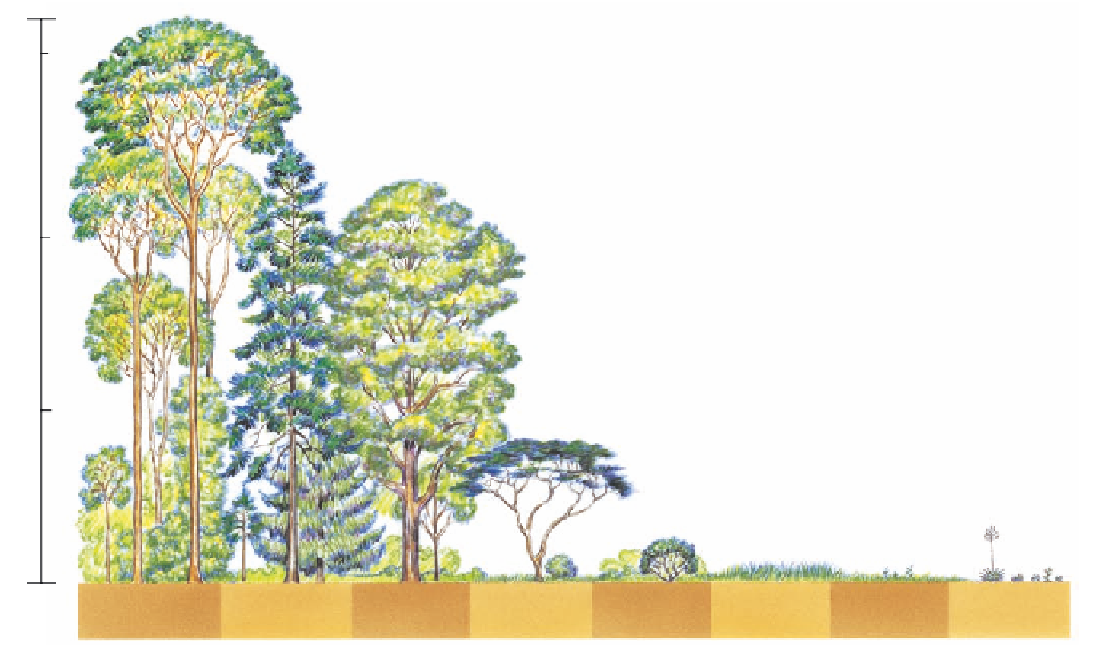Environmental Engineering Reference
In-Depth Information
100
30
20
50
10
ft
m
Tropical
rain forest
Coniferous
forest
Deciduous
forest
Thorn
forest
Thorn
scrub
Tall-grass
prairie
Short-grass
prairie
Desert
scrub
Figure 6-2
Natural capital:
generalized types, relative sizes, and stratification of plant species in various ter-
restrial communities.
species interact. For most terrestrial plants and animals,
species diversity is highest in the tropics and declines
as we move from the equator toward the poles.
The most species-rich environments are tropical
rain forests, coral reefs, the deep sea, and large tropical
lakes. A community such as a tropical rain forest or a
coral reef with a large number of different species
(high species richness) generally has only a few mem-
bers of each species (low species evenness).
stability. According to this hypothesis, a complex com-
munity with a diversity of species and feeding paths
has more ways to respond to most environmental
stresses because it does not have “all its eggs in one
basket.” This is a useful hypothesis, but recent research
has found exceptions to this intuitively appealing idea.
Because no community can function without
some producers and decomposers, there is a mini-
mum threshold of species diversity below which com-
munities and ecosystems cannot function. Beyond
this, it is difficult to know whether simple communi-
ties are less stable than complex and biodiverse ones
or to identify the threshold of species diversity needed
to maintain community stability. Research by ecologist
David Tilman and others suggests that communities
with more species tend to have a higher net primary
productivity (NPP) and can be more resilient than
simpler ones.
Many studies support the idea that some level of
biodiversity provides insurance against catastrophe.
But how much biodiversity is needed in various com-
munities remains uncertain. Recent research suggests
that the average annual NPP of an ecosystem reaches a
peak with 10-40 producer species. Many ecosystems
contain even more producer species, but it is difficult
to distinguish between the essential species and the
Learn about how latitude affects species diversity and
about the differences between big and small islands at
Environmental ScienceNow.
Are Complex Communities More Sustainable
Than Simple Ones?
Having many different species can provide some
ecological stability or sustainability for communities,
but we do not know whether this applies to all
communities or what the minimum number of species
needed to ensure stability is.
In the 1960s, most ecologists believed the greater the
species diversity and the accompanying web of feed-
ing and biotic interactions, the greater an ecosystem's







